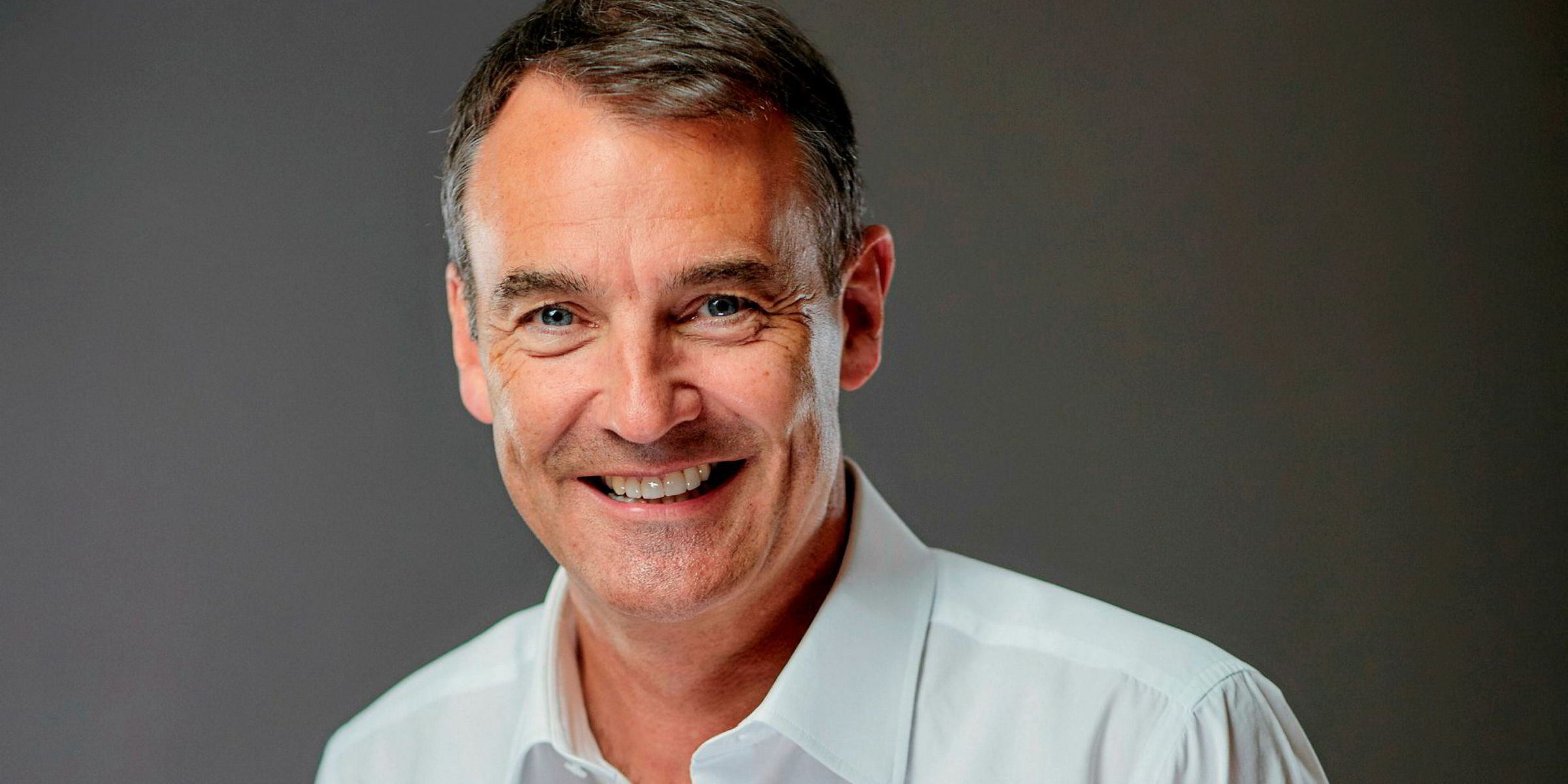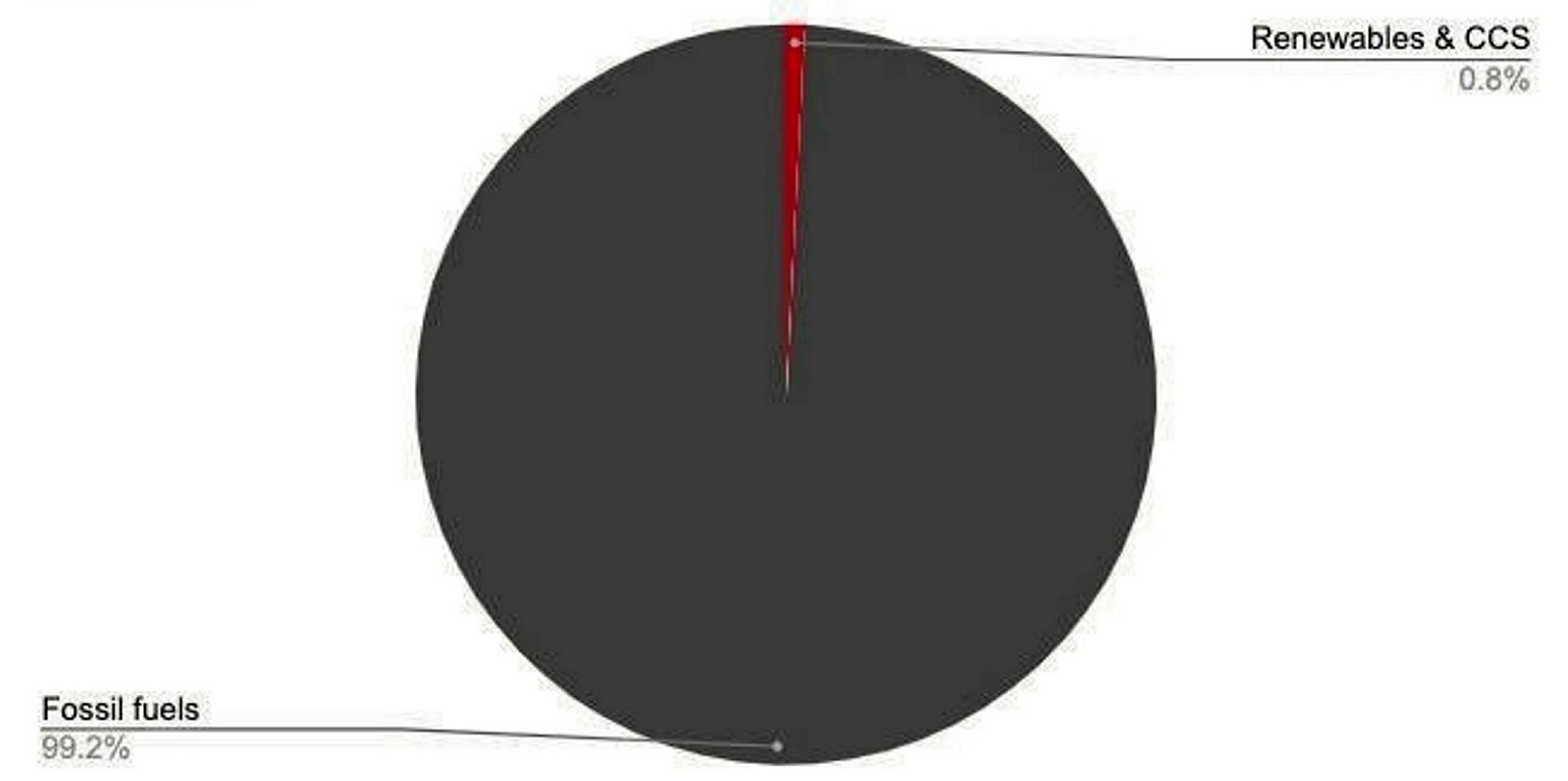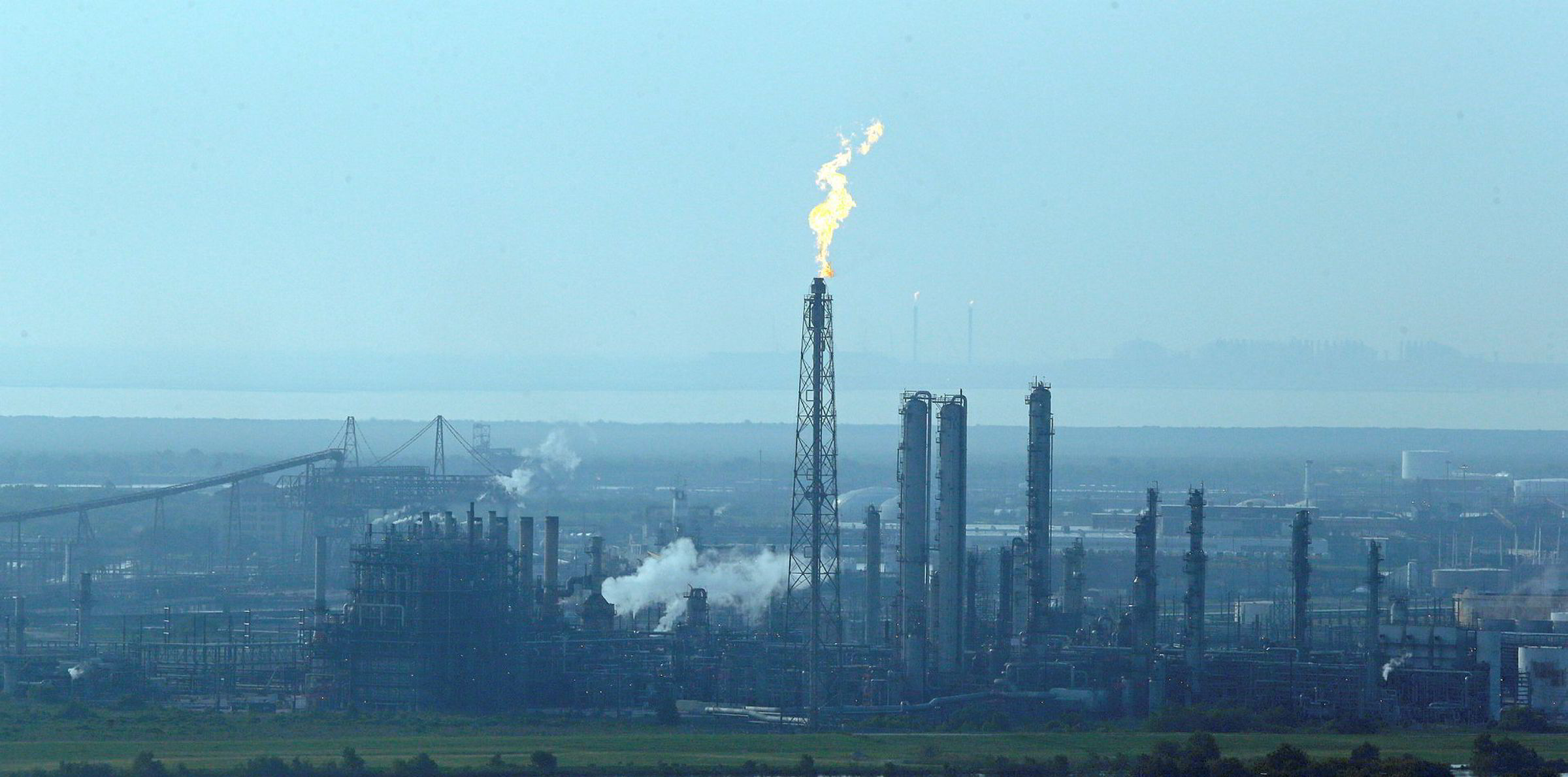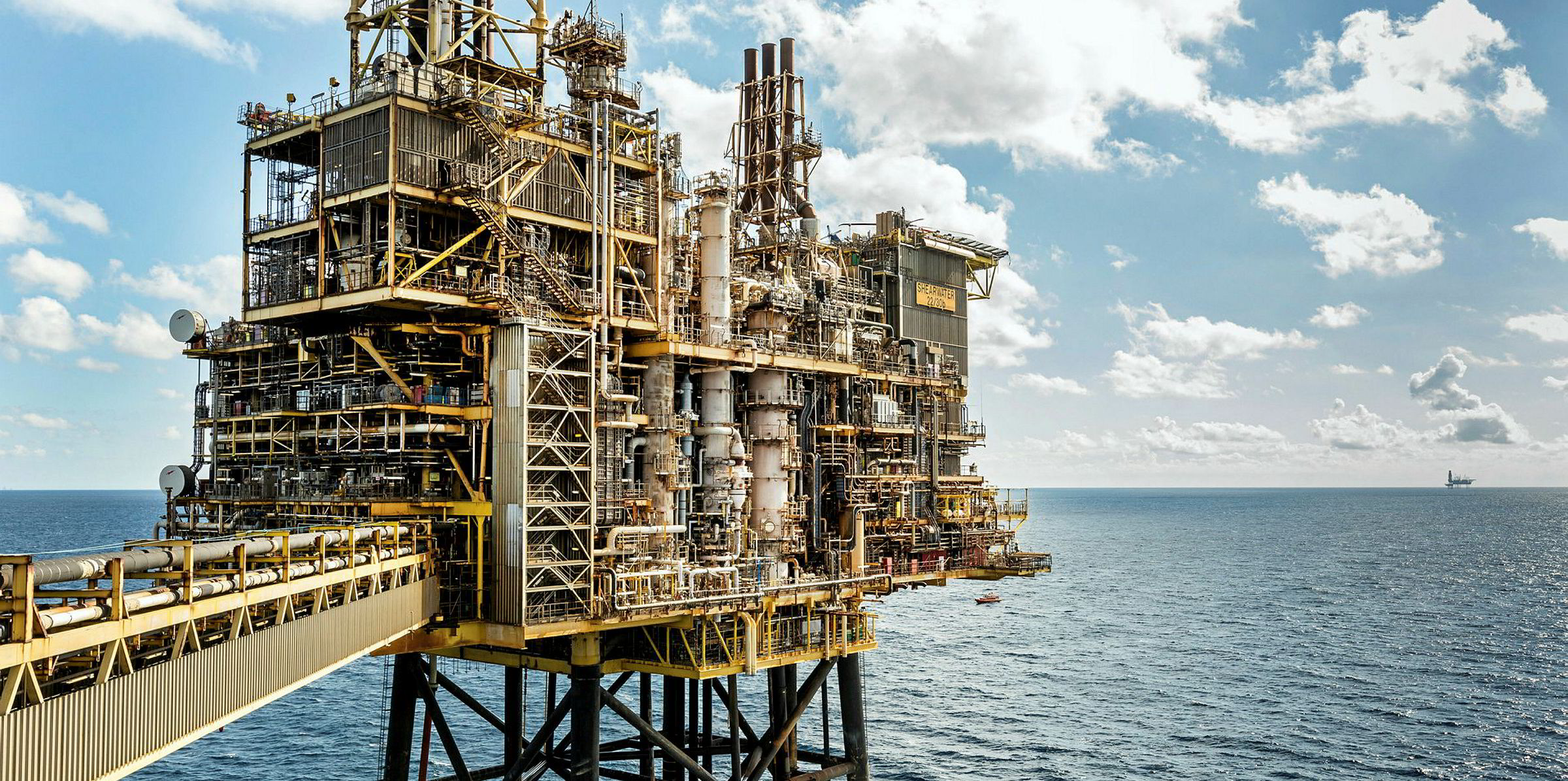Did BP really just pledge to become a net-zero company? It’s complicated.

By Emily Pontecorvo on Feb 13, 2020
Net-zero promises from companies and governments are popping up as often as new Netflix shows, and just like those algorithmically driven hours of entertainment, not all clean energy commitments are created equal. The language used to describe these targets has become as meaningless as the “natural” label on your package of Perdue chicken: “Clean energy” and “net zero” can signify any number of things, and even “renewable” changes depending on who you ask.
The point is, when a fossil fuel major like BP announces its ambition to become a net-zero company by 2050, as it did on Wednesday, it’s important to read the fine print.
To start, “net-zero emissions” is different from plain old “zero emissions” in that it allows for things like carbon offsets, carbon capture technology, and natural solutions like tree-planting to make up for continued emissions. In this case, BP’s net-zero target does not mean it will stop exploring new reserves, extracting oil and gas, or selling it at the pump. Confusingly, it doesn’t even mean the emissions from all the oil and gas products BP sells will be net-zero in 2050.
But all of that aside, the company’s plan does contain significantly more aggressive goals than its peers.
“Depending on the details, it has the potential to be the most comprehensive climate strategy of any of the major oil companies,” said Andrew Logan, senior director of oil and gas at Ceres, a sustainable business nonprofit. But like Logan said, it depends on the details, because while BP’s dreams are big, the company has disclosed few details on how it will achieve them.

BP
One of BP’s targets is to reduce emissions from all of its company operations, which it says is about 55 million tons of CO2 equivalent, to net zero. That includes emissions from things like gas flaring at the wellhead, company cars, and the electricity it buys to keep the lights on. BP’s goal here is somewhat par for the course these days — most of the major oil and gas companies have some kind of emissions reduction target for their operations (though not all of them are net zero).
What’s noteworthy, said Kathy Mulvey, the fossil fuel accountability campaign director at the Union of Concerned Scientists, is that BP says it will measure and reduce its methane footprint at all of its oil and gas sites. “That points to the reality that BP doesn’t actually know exactly how much methane its operations are emitting,” she said.
Critics of these plans say that operational emissions are small potatoes, and that fossil fuel companies should be responsible for the emissions from the oil and gas products they produce and sell to customers, known as scope 3 emissions. This is where BP’s plan really stands out. The company aspires to zero-out the carbon emissions from the eventual combustion of all of the oil and gas it pulls out of the ground by 2050. Right now that amounts to about 360 million tons of CO2 equivalent per year.
 BP
BP
In a speech about the plan on Wednesday, new CEO Bernard Looney tried to anticipate questions about this. He said that yes, this does mean BP’s oil and gas production will probably decline over time. “Does that mean we’ll be producing and refining hydrocarbons” — that’s fossil fuel industry–speak for fossil fuels — “in 2050? Yes, very likely,” he said. “Does that mean we’ll be producing and refining less of them in 2050? Yes, almost certainly. And our aim is that any residual hydrocarbons will be decarbonized.”
To date, only one other fossil fuel company has made this kind of commitment, the small Spanish company Repsol. But unlike Repsol, which has set near-term goals to gradually reduce emissions over time, and hinted at some of the strategies it will use to get there, BP offered no benchmarks or blueprints. Looney said the company would share more information on the “how” of its transition in September.
But there’s one key caveat to BP’s scope 3 target. The oil and gas that the company extracts is only a portion of its business. During a Q&A session after his speech, Looney broke down how they are thinking about scope 3 on a whiteboard.
Final picture. Shows 360 million tons in second bar, which is the added emissions from BP oil and gas. That is what BP is committed to reducing, in absolute terms. pic.twitter.com/zq3Ejxk3fX
— Ben Storrow (@bstorrow) February 12, 2020
BP sells a lot more oil and gas than it digs out of the ground, he said, because it also buys these products from other companies. So while it plans to zero-out emissions from the products BP itself extracts, it’s aiming for a 50 percent reduction in carbon intensity from all the products it sells, including those it’s just a middleman for.
That leaves open the possibility for the total emissions from BP’s sold products to continue to rise, as long as the amount emitted per unit of energy decreases. In his speech, Looney estimated that right now, total emissions from all the products it sells are about 1 gigaton per year.
Ultimately, with a goal of reducing its footprint by 415 million tons of CO2 equivalent by 2050, BP’s new plan is worlds away from companies like Exxon and Chevron, which still claim they are not responsible for the emissions from customers using their products.
BP’s vision also includes a goal to increase the proportion of money it invests into non-oil and gas energy sources, like solar and wind, over time. Right now, that’s only about 3 percent of BP’s investments. But Looney declined to quantify the company’s target in this arena. “We don’t plan to commit to an arbitrary or preset number,” he said.
While critics have already leapt on the vagueness of the plan, Ed Clowes, a business journalist for the Telegraph, described BP’s dilemma aptly on Twitter. On the one hand, BP could stop selling oil and gas and self-destruct. But if it did, another company would step in to fill the gap, because right now, the world still (mostly) runs on oil. “BP has to be in the game to change it,” Clowes wrote.

Burning issue: consumers need to make their money work for the environment ( ANSA/AP )
Last week was a big one for planet Earth, at least if you believe the corporate hype.
BP said it planned to become a net zero carbon company by 2050 and then up popped AXA Investment Managers with its stewardship report, and the suggestion that it would hold the feet of companies in which it invests to the fire. Sort of.
“The next decade will be defined by our ability as an investment and corporate community to turn thoughts, ambitions and desires into tangible action to solve global issues,” was what Matt Christensen, global head of impact strategy and responsible investment (now there’s a title), actually said.

New CEO Bernard Looney says the group will invest more in low-carbon businesses and less in oil & gas 'over time'

BP chief executive Bernard Looney.Photo: BP
Oil giant BP has announced an “ambition” to become a net-zero emissions company by 2050 or sooner, the first of the majors to make such a pledge.
Unlike other oil & gas companies that have made commitments to become greener, BP says its target will include emissions from its oil & gas products.

Oil supermajor BP backs offshore wind for lift-offRead more

Time for Big Oil to put its money where its mouth is over energy transitionRead more
How BP plans to achieve its aim is not yet clear, although a statement revealed that a new Gas & Low Carbon Energy business unit will "pursue opportunities in decarbonisation and new value chains such as hydrogen and CCUS [carbon capture, utilisation and storage]".
Another clue is that last month the company named offshore wind at the top of a list of key technologies ready for commercial lift-off, alongside green hydrogen, solar and electric mobility. Its renewable energy strategy has so far mainly focused on its BP Lightsource PV development joint venture, although it does have a portfolio of US wind farms that add up to more than 1GW.
New chief executive Bernard Looney, who took on the role last week, stated: “We expect to invest more in low carbon businesses — and less in oil and gas — over time. The goal is to invest wisely, into businesses where we can add value, develop at scale, and deliver competitive returns.”
The statement makes it clear that BP intends to continue delivering strong returns to investors while making its energy transition.
Looney explained: “The world’s carbon budget is finite and running out fast; we need a rapid transition to net zero.
“We all want energy that is reliable and affordable, but that is no longer enough. It must also be cleaner. To deliver that, trillions of dollars will need to be invested in replumbing and rewiring the world’s energy system. It will require nothing short of reimagining energy as we know it.
“This will certainly be a challenge, but also a tremendous opportunity. It is clear to me, and to our stakeholders, that for BP to play our part and serve our purpose, we have to change. And we want to change — this is the right thing for the world and for BP.”
Chairman Helge Lund added: “As we embark on this ambitious agenda, we will maintain a strong focus on safe, reliable and efficient operations and on delivering the promises we have made to our investors.”
The pledge has already been met with skepticism by climate groups, who point out that BP plans to increase its production of oil & gas by about a fifth between 2018 and 2030, even though such a move would increase the chances of runaway global heating.

Big Oil must pump up clean energy spend to slow climate crisis: IEARead more

Offshore oil industry 'social licence to operate under threat' in UKRead more
Ellen Gibson, a campaigner for climate group 350.org, said: “It is not possible to keep to a 2°C warming limit — let alone 1.5°C — while continuing to dig up and burn fossil fuels. Unless BP commits clearly to stop searching for more oil and gas, and to keep their existing reserves in the ground, we shouldn’t take a word of their PR spin seriously.”
Greenpeace oil advisor Charlie Kronick added: “BP’s ‘ambitions’ and ‘aims’ all seem to apply to Looney’s successors, and leave the urgent questions unanswered. How will they reach net zero? Will it be through offsetting? When will they stop wasting billions on drilling for new oil and gas we can’t burn? What is the scale and schedule for the renewables investment they barely mention? And what are they going to do this decade, when the battle to protect our climate will be won or lost?”
BP says it will "set out more information" on its strategy and short-term plans at a capital markets day in September.(Copyright)
RELATED NEWS
BP deeper into renewables with Amazon deals and Lightsource
Transition
5 December 2019 8:17 GMT
European oil giants leave US majors standing in shift to wind and solar
Transition
29 January 2020 6:59 GMT
Equinor efforts to cut emissions only a good next step
Wind
6 January 2020 13:57 GMT
Shell and EDPR hit record-low US offshore wind price with Mayflower
Wind
12 February 2020 8:40 GMT
Shell moves into solar big-time with Australia plant
Transition
7 February 2020 10:25 GMT
12 February 2020 13:12 GMT UPDATED 12 February 2020 14:29 GMT
By Leigh Collins
One of BP’s targets is to reduce emissions from all of its company operations, which it says is about 55 million tons of CO2 equivalent, to net zero. That includes emissions from things like gas flaring at the wellhead, company cars, and the electricity it buys to keep the lights on. BP’s goal here is somewhat par for the course these days — most of the major oil and gas companies have some kind of emissions reduction target for their operations (though not all of them are net zero).
What’s noteworthy, said Kathy Mulvey, the fossil fuel accountability campaign director at the Union of Concerned Scientists, is that BP says it will measure and reduce its methane footprint at all of its oil and gas sites. “That points to the reality that BP doesn’t actually know exactly how much methane its operations are emitting,” she said.
Critics of these plans say that operational emissions are small potatoes, and that fossil fuel companies should be responsible for the emissions from the oil and gas products they produce and sell to customers, known as scope 3 emissions. This is where BP’s plan really stands out. The company aspires to zero-out the carbon emissions from the eventual combustion of all of the oil and gas it pulls out of the ground by 2050. Right now that amounts to about 360 million tons of CO2 equivalent per year.
 BP
BPIn a speech about the plan on Wednesday, new CEO Bernard Looney tried to anticipate questions about this. He said that yes, this does mean BP’s oil and gas production will probably decline over time. “Does that mean we’ll be producing and refining hydrocarbons” — that’s fossil fuel industry–speak for fossil fuels — “in 2050? Yes, very likely,” he said. “Does that mean we’ll be producing and refining less of them in 2050? Yes, almost certainly. And our aim is that any residual hydrocarbons will be decarbonized.”
To date, only one other fossil fuel company has made this kind of commitment, the small Spanish company Repsol. But unlike Repsol, which has set near-term goals to gradually reduce emissions over time, and hinted at some of the strategies it will use to get there, BP offered no benchmarks or blueprints. Looney said the company would share more information on the “how” of its transition in September.
But there’s one key caveat to BP’s scope 3 target. The oil and gas that the company extracts is only a portion of its business. During a Q&A session after his speech, Looney broke down how they are thinking about scope 3 on a whiteboard.
Final picture. Shows 360 million tons in second bar, which is the added emissions from BP oil and gas. That is what BP is committed to reducing, in absolute terms. pic.twitter.com/zq3Ejxk3fX
— Ben Storrow (@bstorrow) February 12, 2020
BP sells a lot more oil and gas than it digs out of the ground, he said, because it also buys these products from other companies. So while it plans to zero-out emissions from the products BP itself extracts, it’s aiming for a 50 percent reduction in carbon intensity from all the products it sells, including those it’s just a middleman for.
That leaves open the possibility for the total emissions from BP’s sold products to continue to rise, as long as the amount emitted per unit of energy decreases. In his speech, Looney estimated that right now, total emissions from all the products it sells are about 1 gigaton per year.
Ultimately, with a goal of reducing its footprint by 415 million tons of CO2 equivalent by 2050, BP’s new plan is worlds away from companies like Exxon and Chevron, which still claim they are not responsible for the emissions from customers using their products.
BP’s vision also includes a goal to increase the proportion of money it invests into non-oil and gas energy sources, like solar and wind, over time. Right now, that’s only about 3 percent of BP’s investments. But Looney declined to quantify the company’s target in this arena. “We don’t plan to commit to an arbitrary or preset number,” he said.
While critics have already leapt on the vagueness of the plan, Ed Clowes, a business journalist for the Telegraph, described BP’s dilemma aptly on Twitter. On the one hand, BP could stop selling oil and gas and self-destruct. But if it did, another company would step in to fill the gap, because right now, the world still (mostly) runs on oil. “BP has to be in the game to change it,” Clowes wrote.

Burning issue: consumers need to make their money work for the environment ( ANSA/AP )
Last week was a big one for planet Earth, at least if you believe the corporate hype.
BP said it planned to become a net zero carbon company by 2050 and then up popped AXA Investment Managers with its stewardship report, and the suggestion that it would hold the feet of companies in which it invests to the fire. Sort of.
“The next decade will be defined by our ability as an investment and corporate community to turn thoughts, ambitions and desires into tangible action to solve global issues,” was what Matt Christensen, global head of impact strategy and responsible investment (now there’s a title), actually said.
BP Wants To Slash Carbon Emissions, But Has No Plan For Doing That
There is an old expression that says, “If you fail to plan, you have a plan to fail.” It’s good to have goals, but plans are what make achieving those goals possible. This week in London, Bernard Looney, the new CEO of BP, announced that his company intends to eliminate or offset 100% of its carbon emissions by 2050. “We are aiming to earn back the trust of society, Looney said according to a report by The New York Times. “We have got to change, and change profoundly. Trillions of dollars will need to be invested in replumbing and rewiring the world’s energy system. It will require nothing short of reimagining energy as we know it,” Looney said in a company statement.

No one can argue with that. BP has been one of the largest polluters of the planet for the past 50 years or more and is singlehandedly responsible for screwing up the Gulf of Mexico with the disastrous Deep Water Horizon fiasco that was far larger than anyone knew at the time. This is a company that spent $13 million lobbying against a ballot initiative that would have imposed a modest tax on carbon emissions in the state of Washington a few years ago, but now says it supports stricter climate laws that include putting a price on carbon emissions. It’s little wonder people have trouble trusting the company.
There is one fairly bold component of Looney’s Reimagining Energy announcement that deserves attention, however. He says not only does the company intend to slash carbon emissions from its operations, it also intends to significantly reduce the emissions created by burning the oil and gas it produces, which are so-called Scope 3 emissions. Unfortunately, Looney offered no details about how that’s going to happen, promising a full report on the details by next September.
At the present time, BP emits about 55 million tons of greenhouse gases each year directly from its extraction operations and refineries, The New York Times reports. But when its products are used, they generate another 360 million tons of carbon dioxide. And that doesn’t include the damage done by methane emissions from its drilling and pumping operations. Looney also conveniently omits the 77 million tons of emissions attributable to the oil and gas it purchases from other suppliers.
Also, important note from my colleague Laura Hurst: "An important nuance here lies in the language BP is using here. They’re calling this an 'ambition' not a 'target'. The use of this word has been a bugbear for some activist investors."— Akshat Rathi (@AkshatRathi) February 12, 2020
Despite all the happy talk, don’t get the idea that BP is going to stop its fossil fuel extraction operations any time soon. During the question and answer session after Looney’s announcement, he said the company would “very likely” still be producing and refining hydrocarbons by 2050, but that it planned to invest “less and less in oil and gas” over time, according to The Verge. The New York Times may have some insight into that conundrum. It speculates that BP may be planning on making money from capturing and sequestering carbon from the atmosphere — the real world equivalent to a septic system pumping company emptying the contents of its trucks on your property and then charging you to clean up its mess.
Environmental Groups Respond
The idea of cutting emissions from burning fossil fuels is pretty bold stuff for an oil company, so environmental groups have given the company some tepid praise for timidly going where no fossil fuel company has gone before. “Looney deserves support and credit for starting BP on the journey towards carbon neutrality and policy leadership. The direction is good, and we look forward to hearing more about the specifics. Time will tell if he gets BP where it needs to go. Its real actions and verifiable emissions reductions that will be the measure of success,” said Environmental Defense Fund president Fred Krupp after the announcement. But Ellen Gibson of 350.0rg Britain tells The New York Times, “Unless BP commits clearly to stop searching for more oil and gas, and to keep their existing reserves in the ground, we shouldn’t take a word of their P.R. spin seriously.”
Goals are like lighthouses. They give us something to aim for. A sailboat crossing the ocean is off course 99% of the time but because it has a goal — the white cliffs of Dover, perhaps — it can correct its path regularly and arrive safely at its destination. A plan is what makes all those mid-course corrections possible. We will have to wait until September when BP reveals its plan before we can judge whether it is sound, but until then, the company has established a clear goal and for that it should be congratulated
BEYOND PETROLEUM
BP announces 'ambition' to become a net-zero-emissions company by 2050New CEO Bernard Looney says the group will invest more in low-carbon businesses and less in oil & gas 'over time'

BP chief executive Bernard Looney.Photo: BP
Oil giant BP has announced an “ambition” to become a net-zero emissions company by 2050 or sooner, the first of the majors to make such a pledge.
Unlike other oil & gas companies that have made commitments to become greener, BP says its target will include emissions from its oil & gas products.

Oil supermajor BP backs offshore wind for lift-offRead more

Time for Big Oil to put its money where its mouth is over energy transitionRead more
How BP plans to achieve its aim is not yet clear, although a statement revealed that a new Gas & Low Carbon Energy business unit will "pursue opportunities in decarbonisation and new value chains such as hydrogen and CCUS [carbon capture, utilisation and storage]".
Another clue is that last month the company named offshore wind at the top of a list of key technologies ready for commercial lift-off, alongside green hydrogen, solar and electric mobility. Its renewable energy strategy has so far mainly focused on its BP Lightsource PV development joint venture, although it does have a portfolio of US wind farms that add up to more than 1GW.
New chief executive Bernard Looney, who took on the role last week, stated: “We expect to invest more in low carbon businesses — and less in oil and gas — over time. The goal is to invest wisely, into businesses where we can add value, develop at scale, and deliver competitive returns.”
The statement makes it clear that BP intends to continue delivering strong returns to investors while making its energy transition.
Looney explained: “The world’s carbon budget is finite and running out fast; we need a rapid transition to net zero.
“We all want energy that is reliable and affordable, but that is no longer enough. It must also be cleaner. To deliver that, trillions of dollars will need to be invested in replumbing and rewiring the world’s energy system. It will require nothing short of reimagining energy as we know it.
“This will certainly be a challenge, but also a tremendous opportunity. It is clear to me, and to our stakeholders, that for BP to play our part and serve our purpose, we have to change. And we want to change — this is the right thing for the world and for BP.”
Chairman Helge Lund added: “As we embark on this ambitious agenda, we will maintain a strong focus on safe, reliable and efficient operations and on delivering the promises we have made to our investors.”
The pledge has already been met with skepticism by climate groups, who point out that BP plans to increase its production of oil & gas by about a fifth between 2018 and 2030, even though such a move would increase the chances of runaway global heating.

Big Oil must pump up clean energy spend to slow climate crisis: IEARead more

Offshore oil industry 'social licence to operate under threat' in UKRead more
Ellen Gibson, a campaigner for climate group 350.org, said: “It is not possible to keep to a 2°C warming limit — let alone 1.5°C — while continuing to dig up and burn fossil fuels. Unless BP commits clearly to stop searching for more oil and gas, and to keep their existing reserves in the ground, we shouldn’t take a word of their PR spin seriously.”
Greenpeace oil advisor Charlie Kronick added: “BP’s ‘ambitions’ and ‘aims’ all seem to apply to Looney’s successors, and leave the urgent questions unanswered. How will they reach net zero? Will it be through offsetting? When will they stop wasting billions on drilling for new oil and gas we can’t burn? What is the scale and schedule for the renewables investment they barely mention? And what are they going to do this decade, when the battle to protect our climate will be won or lost?”
BP says it will "set out more information" on its strategy and short-term plans at a capital markets day in September.(Copyright)
RELATED NEWS
BP deeper into renewables with Amazon deals and Lightsource
Transition
5 December 2019 8:17 GMT
European oil giants leave US majors standing in shift to wind and solar
Transition
29 January 2020 6:59 GMT
Equinor efforts to cut emissions only a good next step
Wind
6 January 2020 13:57 GMT
Shell and EDPR hit record-low US offshore wind price with Mayflower
Wind
12 February 2020 8:40 GMT
Shell moves into solar big-time with Australia plant
Transition
7 February 2020 10:25 GMT
12 February 2020 13:12 GMT UPDATED 12 February 2020 14:29 GMT
By Leigh Collins









